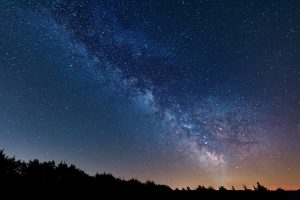The illumination of night landscapes by artificial lighting increases globally by about 2 to 6 percent per year, with effects on people and nature. A new guide describes how municipalities can minimize light pollution by making their street and building lighting more efficient. Researchers from the Leibniz Institute of Freshwater Ecology and Inland Fisheries (IGB), the Federal Agency for Nature Conservation (BfN) and the University of Münster have now jointly published the guide on redesigning and retrofitting outdoor lighting.
Kategorie für Blog: Artificial light
 Schleiden-Gemünd / Nettersheim, 05.04.2019. Experiencing the starry sky at night with twinkling celestial bodies is a special experience for many people that is now only possible in a few places in Germany - one of these places is the Eifel National Park. Since 2010, a regional initiative has been successfully campaigning for the protection of the night sky and the preservation of the natural night landscape - in 2014, this was followed by the provisional designation as the first "International Dark Sky Park" in Germany. Now this initiative can look forward to the final recognition as International Star Park Eifel National Park. The designation as a protected area of the International Dark Sky Association (IDA) is a predicate with which few regions worldwide can advertise themselves, in Germany there are only four. For the Eifel National Park, which turned 15 this year, this recognition is a nice "birthday present".
Schleiden-Gemünd / Nettersheim, 05.04.2019. Experiencing the starry sky at night with twinkling celestial bodies is a special experience for many people that is now only possible in a few places in Germany - one of these places is the Eifel National Park. Since 2010, a regional initiative has been successfully campaigning for the protection of the night sky and the preservation of the natural night landscape - in 2014, this was followed by the provisional designation as the first "International Dark Sky Park" in Germany. Now this initiative can look forward to the final recognition as International Star Park Eifel National Park. The designation as a protected area of the International Dark Sky Association (IDA) is a predicate with which few regions worldwide can advertise themselves, in Germany there are only four. For the Eifel National Park, which turned 15 this year, this recognition is a nice "birthday present".
Accessible as an interactive world map, the "New World Atlas of Artificial Sky Brighness" is now publicly available, marking the first global measurement of light pollution since 2001. Further information: New atlas of light pollution: a third of humanity can no longer see the Milky Way | WIRED Germany

